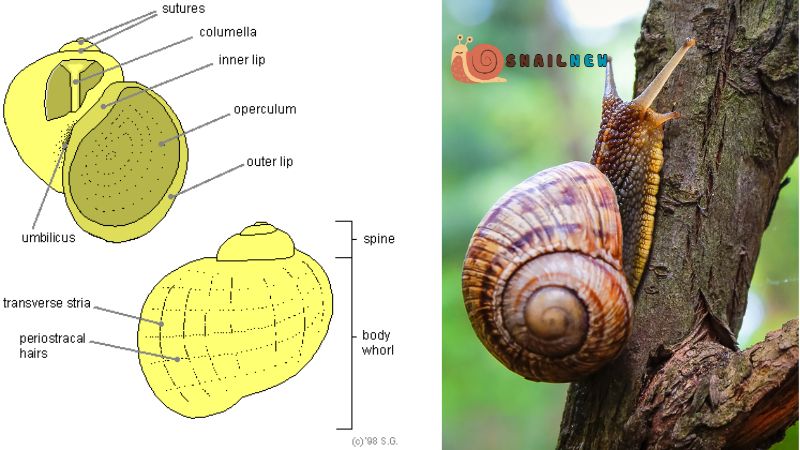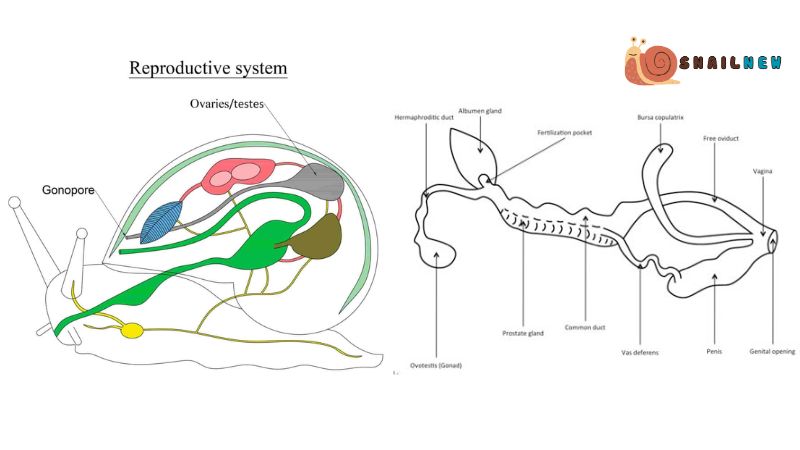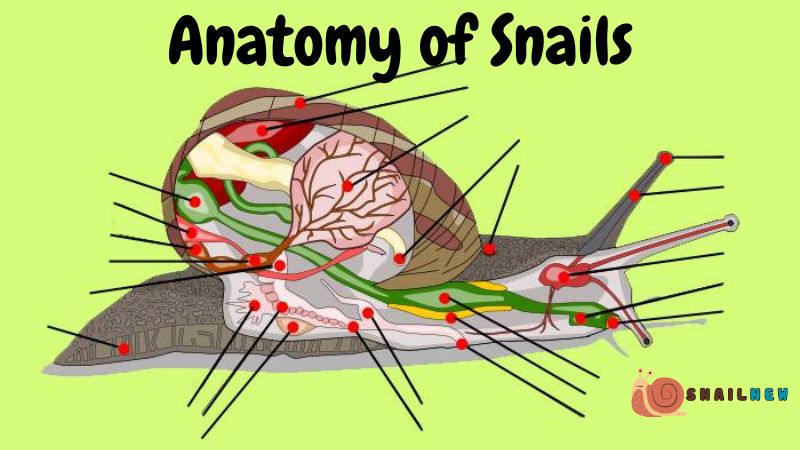The anatomy of snails is a testament to the wonders of natural evolution. These diminutive creatures, often overlooked in the grand tapestry of the animal kingdom, possess a remarkable array of adaptations that enable them to thrive in diverse environments. From their distinctive shells to their intricate internal structures, the anatomy of snails by Snailnew offers a fascinating glimpse into the complexity of life on Earth.
Table of Contents
ToggleAnatomy of Snails
The Shell:
A Protective Fortress At the forefront of the anatomy of snails lies their most iconic feature: the shell. Composed primarily of calcium carbonate, the shell serves as a protective fortress, shielding the soft body within from predators and environmental hazards. Formed by specialized glands in the mantle, the shell varies in size, shape, and color across different species of snails. Whether spiraled or coiled, smooth or textured, the shell is a testament to the unique evolutionary history of each individual snail.

The Foot:
A Muscular Locomotive Beneath the graceful curvature of the shell lies the muscular foot, the powerhouse of snail locomotion. This fleshy appendage, located underneath the body, propels the snail forward with a rhythmic undulating motion. Secretions of mucus from the foot reduce friction, allowing the snail to glide effortlessly over surfaces. Not merely a mode of transportation, the foot also plays a crucial role in anchoring the snail to substrates and facilitating climbing—a testament to the versatility of the anatomy of snails.
The Head:
Command Center of Sensory Perception At the anterior end of the body, the head of the snail serves as the command center of sensory perception. Here, nestled between the tentacles, lies a world of sensory organs awaiting exploration. Two pairs of retractable tentacles extend outward, each serving distinct functions. The upper pair, adorned with eyes at their tips, detects changes in light intensity and aids in navigation. Meanwhile, the lower pair functions primarily as tactile and olfactory organs, providing the snail with vital information about its surroundings.

The Mouth:
Gateway to Gastronomic Delights Beneath the sensory array of tentacles lies the mouth, the gateway to gastronomic delights for the snail. Equipped with a radula—a rasping tongue-like organ—the mouth of the snail is a formidable tool for feeding. The radula, covered in rows of tiny teeth, is adept at scraping and rasping food particles from surfaces, enabling the snail to forage for sustenance in its environment. From tender plant matter to decaying organic material, the diet of the snail is as diverse as the habitats it inhabits.
The Digestive System:
A Journey of Nutrient Absorption Once ingested, food embarks on a journey through the digestive system of the snail—an essential component of its anatomy. From the esophagus to the stomach and intestine, digestive enzymes break down food particles into absorbable nutrients. Along the intestinal wall, nutrients are absorbed into the bloodstream, providing the snail with the energy needed for growth and survival. The efficiency of the digestive system is a testament to the evolutionary adaptations honed over millions of years.
The Respiratory System:
Breathing Life Into the Body For air-breathing snails, the respiratory system plays a vital role in oxygen exchange—a cornerstone of their anatomy. Within the pulmonary cavity, oxygen is extracted from the surrounding air, while carbon dioxide is expelled as waste. Aquatic species, on the other hand, utilize gills for respiration, extracting oxygen from water through a process known as cutaneous respiration. Whether terrestrial or aquatic, the respiratory system of snails is finely tuned to meet the demands of their respective habitats.
The Reproductive System:
Hermaphroditic Marvels Central to the anatomy of snails is their unique reproductive system—a marvel of biological ingenuity. Snails are hermaphrodites, possessing both male and female reproductive organs within a single individual. During mating, they engage in a delicate dance of exchange, transferring sperm to fertilize each other’s eggs. Fertilized eggs are laid in gelatinous egg masses, where they develop into tiny juvenile snails, perpetuating the cycle of life.

The Circulatory System:
A Network of Lifeblood Fueling the anatomy of snails is a network of lifeblood known as the circulatory system. With an open circulatory system, hemolymph—a fluid analogous to blood—pumps through the body cavity, delivering oxygen and nutrients to tissues and organs. As the life force that sustains every cell, hemolymph embodies the interconnectedness of the snail’s physiology, ensuring the harmonious functioning of its delicate internal machinery.
The Nervous System:
Orchestrating Behaviors Completing the intricate tapestry of the anatomy of snails is the nervous system—a complex network of neurons that orchestrates behaviors and responses. Ganglia, clusters of nerve cells, are connected by nerve cords, transmitting signals throughout the body. From basic reflexes to complex decision-making processes, the nervous system governs every aspect of snail behavior, shaping their interactions with the world around them.
Conclusion:
In conclusion, the anatomy of snails is a testament to the remarkable diversity and adaptability of life on Earth. From the protective shell to the intricate internal structures, every aspect of the snail’s anatomy reflects the evolutionary pressures that have shaped its existence. By unraveling the mysteries of snail anatomy, we gain a deeper appreciation for these miniature marvels and the intricate web of life in which they are woven.
Related Posts:
- The Importance of Calcium for Snails: Ensuring Shell…
- Do Snails Shed Their Shells? The Truth About Snail Shells
- Exploring the Aquatic Realm: Can Snails Breathe Underwater?
- Is a Snail a Vertebrate? Understanding Animal Classification
- Do Snails Have Mouths? Exploring the Remarkable…
- The Eyes of the Unseen: Can Snails See?


